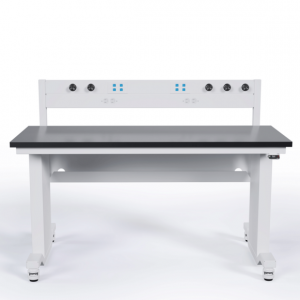
Face Transplants Could Become More Mainstream as Surgical Techniques Improve
Groundbreaking advances in medical transplant technology are now paving the way for one of the most complex and challenging procedures in cosmetic surgery.
Before toddlers gain the ability to verbalize or understand spoken language, they rely on a silent way of communicating – by looking into the parents’ faces.
Recognizing facial expressions is so central to human interaction that our brains often unselfconsciously project human features onto inanimate objects.
Psychologically savvy car designers take advantage of this innate human behavior by creating automobile designs that resemble a face, with two headlights for eyes and a grill and bumper set that creates a friendly smile – or, in some cases, an angry grimace.
Patients with severely disfigured faces often become virtual societal outcasts, leading to cases of clinical depression.
A cruel downside to our innate human need to interpret faces is the plight of those with severe disfigurement.
People with disfigured faces are often largely rejected by large swaths of society who find their condition difficult to accept.
This leaves a fairly significant cohort of patients with facial disfigurement – including those with congenital defects, burns, gunshots, knife attacks, chemical attacks, car accidents, or even instances of self-harm – at risk for clinical depression due to a lack of acceptance by society at large.
The First Successful Face Transplant – One of the Most Challenging Cosmetic Reconstruction Surgeries
Transplanting a human face is probably the most challenging cosmetic surgery there is.
Imagine the complexity of successfully harvesting a doner face and reattaching up to twelve major nerve bundles, as well as muscular systems that control the jaw, lips, tongue, and throat, the nose and its internal nares and nasal passages, as well as the structures surrounding the eye sockets, including eyelids and eyebrows.
In many cases, a successful facial transplant may also require transplanting bone structures as well to properly support the face.
The first successful face transplant (known as Vascularized composite tissue allotransplantation or VCA in the surgical community) took place in France in 2005.
Although technically a “partial” face transplant, it is considered a landmark achievement, establishing face transplants (FT) as a potentially superior approach in comparison to conventional piecemeal reconstructive surgeries that rely on tissue harvested from the patients themselves (such as skin or bone).
Recent Advances in Facial Transplant Surgeries are Pointing the Way toward Making FT/VCA a More Mainstream Procedure for the Severely Disfigured
Since the first successful facial transplant surgery in France in 2005, surgical teams around the world – in the US and Canada, China, France, Italy, and Turkey – have performed 50 such surgeries to date.
These procedures are long and intensive – one recent surgery at the Mayo Clinic required 50 hours in the surgery theater. Practitioners must also familiarize themselves with the broad array of connective tissue, nerve bundles, and skin graft techniques before attempting their first operation – this often involves lengthy study of and practice on medical cadaver “patients” to develop proper techniques.
According to recent research published in the journal JAMA Surgery, the long-term prognosis for facial transplant patients compares favorably with other major transplant surgeries, with 85% of facial transplant patients still living after 5 years and 74% after 10 years.
The researchers noted that the most recent patients had a statistically higher 5- and 10-year survival rate, which could indicate that the surgical techniques and procedures are improving over time, leading to better long-term outcomes.
Fully Integrated Material Handling Station
Read more...
Julia Solodovnikova
Formaspace
+1 800-251-1505
email us here
Visit us on social media:
LinkedIn
Facebook
X
Distribution channels: Chemical Industry, Culture, Society & Lifestyle, Education, Healthcare & Pharmaceuticals Industry, Science
Legal Disclaimer:
EIN Presswire provides this news content "as is" without warranty of any kind. We do not accept any responsibility or liability for the accuracy, content, images, videos, licenses, completeness, legality, or reliability of the information contained in this article. If you have any complaints or copyright issues related to this article, kindly contact the author above.
Submit your press release


